Steel Products Prices North America

SIMA: Steel Import License Data for March
Written by Peter Wright
April 5, 2019
Year over year, total rolled product imports in March were down by 11.2 percent, measured as a three-month moving average (3MMA).
This early look at March’s import volume is based on Commerce Department license data (see explanation below). Beginning in January 2018, we expanded this import analysis to include all major steel sectors: sheet, plate, longs and tubulars, with a total of 18 subsectors, and we now publish an import market share analysis for the same 18 steel product groups. All volumes in this analysis are reported in short tons. We use three-month moving averages rather than single-month results to smooth out the variability.
![]() Imports of rolled products in the single month of February at 1,694,737 short tons were the second lowest since September 2011, but March recovered to 1,740,835 tons. The three-month moving average (3MMA) in March was 1,932,636 tons. Year over year on a 3MMA basis, sheet products were down by 15.2 percent, plate products were down by 7.1 percent, long products were down by 10.8 percent and tubulars were down by 4.6 percent. For the 12 months of 2018, total rolled product imports were down by 9.9 percent from 2017, but were almost exactly the same as in 2016. It’s not clear what effect the Section 232 legislation had on import volumes, and what was the effect of domestic demand, the global surplus or currency variables.
Imports of rolled products in the single month of February at 1,694,737 short tons were the second lowest since September 2011, but March recovered to 1,740,835 tons. The three-month moving average (3MMA) in March was 1,932,636 tons. Year over year on a 3MMA basis, sheet products were down by 15.2 percent, plate products were down by 7.1 percent, long products were down by 10.8 percent and tubulars were down by 4.6 percent. For the 12 months of 2018, total rolled product imports were down by 9.9 percent from 2017, but were almost exactly the same as in 2016. It’s not clear what effect the Section 232 legislation had on import volumes, and what was the effect of domestic demand, the global surplus or currency variables.
Figure 1 shows the tonnage of total rolled steel and semi-finished imports through March on a 3MMA basis. Total rolled product volume has been on an erratically downward trend since early 2015. Evidently, Section 232 has had no effect on semi-finished products. Except for early 2016 (when the volume was very low), the import volume of semis on a 3MMA basis has cycled between 490,000 and 930,000 tons per month for the last seven years.

Figure 2 summarizes the import volume of flat rolled, tubular and long products since 2004 on a 3MMA basis. All three have been trending down, but tubulars have experienced an increase since December.
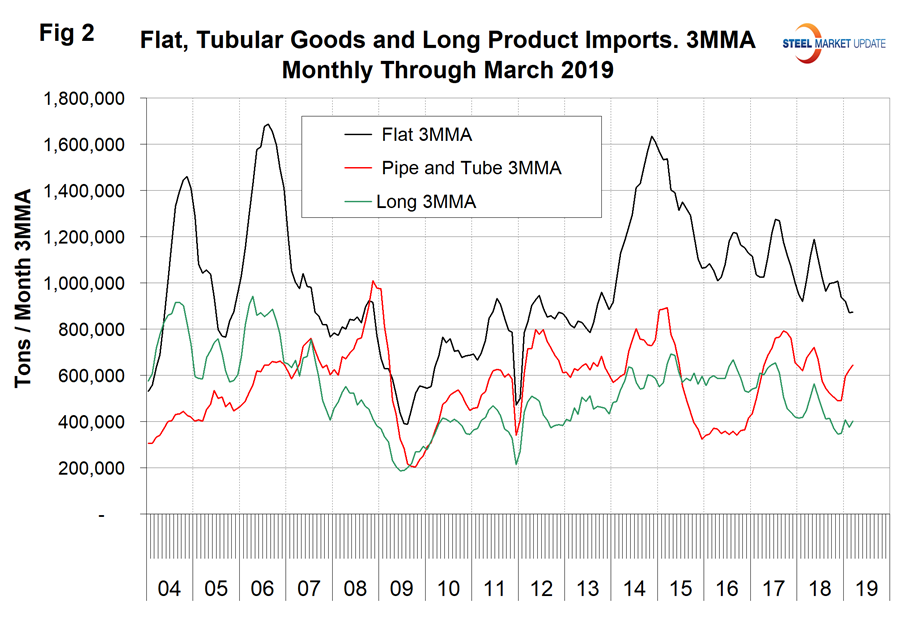
There are three tables in this report. In each of them we show the 3MMA of the tonnage in March 2019 and 2018 with the year-over-year change. We then calculate the percentage change in volume in the most recent three months with the previous three months. This month we are comparing January, February and March with October, November and December (3M/3M). The next column to the right shows the year-over-year change as a percentage. Declines are color coded green and increases are coded red. Finally, in the far-right column, we subtract the 12-month change from the three-month change. This is a way of describing the magnitude of the recent trend as a percentage. It is not unusual for the color code of the trend to be the opposite of the two time frame analyses.
Table 1 describes the imports of all major sectors of the sheet and plate markets. In the flat rolled sectors shown in Table 1, of the big three sheet products, hot rolled was down by 23.0 percent year-over-year as cold rolled and HDG have declined by 22.0 percent and 5.0 percent, respectively. CTL plate has increased by 5.4 percent year-over-year as coiled plate has declined by 12.6 percent. Figures 3 and 4 show the history of sheet and plate product imports since March 2004.
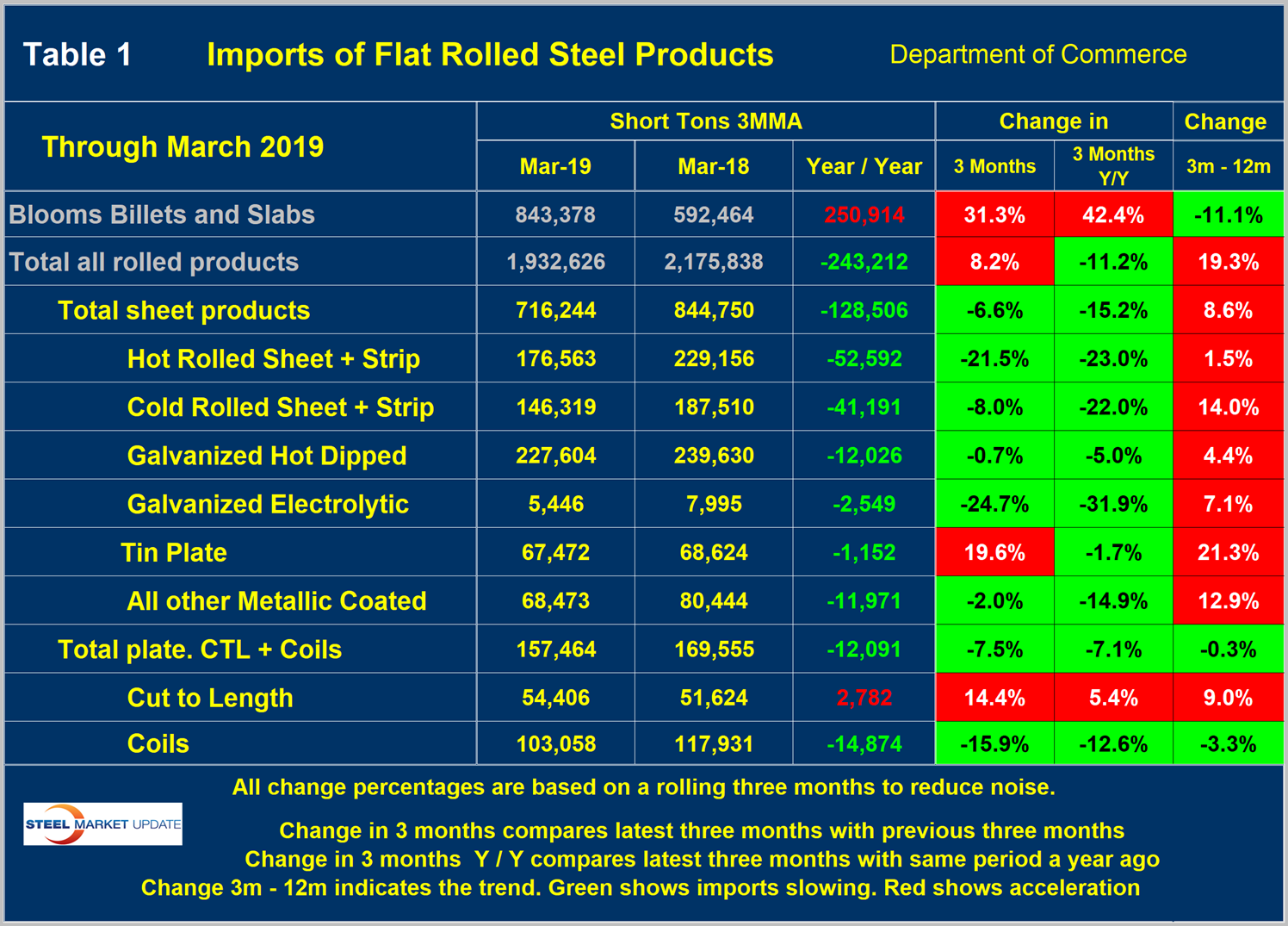


Table 2 shows the same analysis for long products where the year-over-year volume was down by 10.8 percent in total. Rebar and wire rod were up slightly, but other products declined by double digits.
Figure 5 shows the history of long product imports.
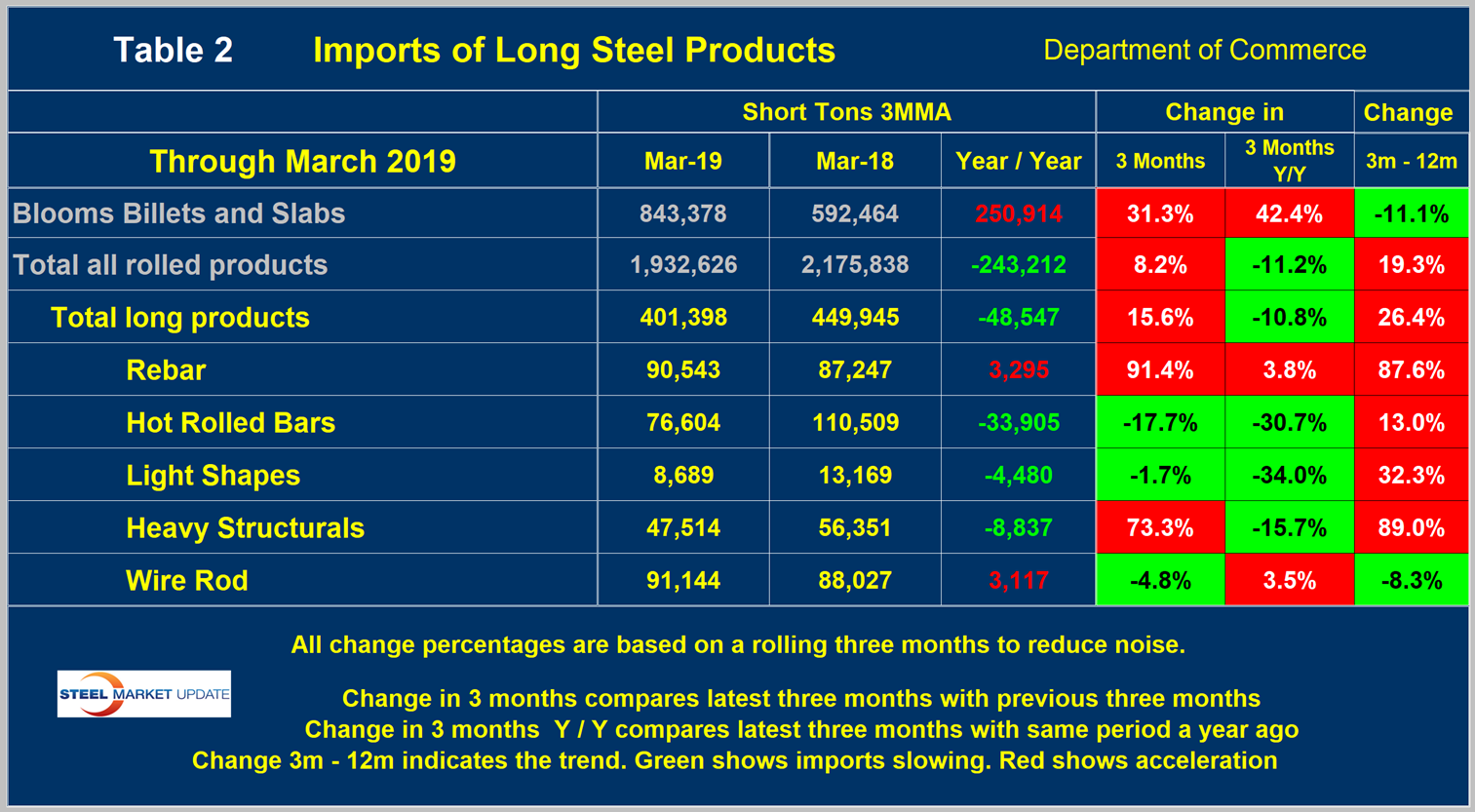
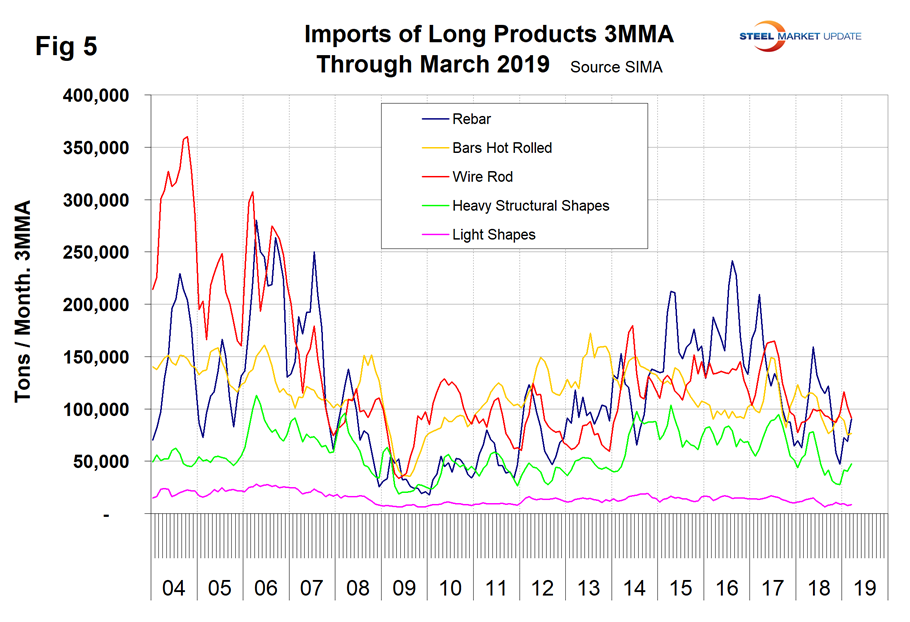
Table 3 shows that for tubular products in total the volume was down by 4.6 percent year-over-year, driven in particular by standard pipe, but line pipe was up by 41.0 percent. Figure 6 shows the history of tubular imports since 2004.
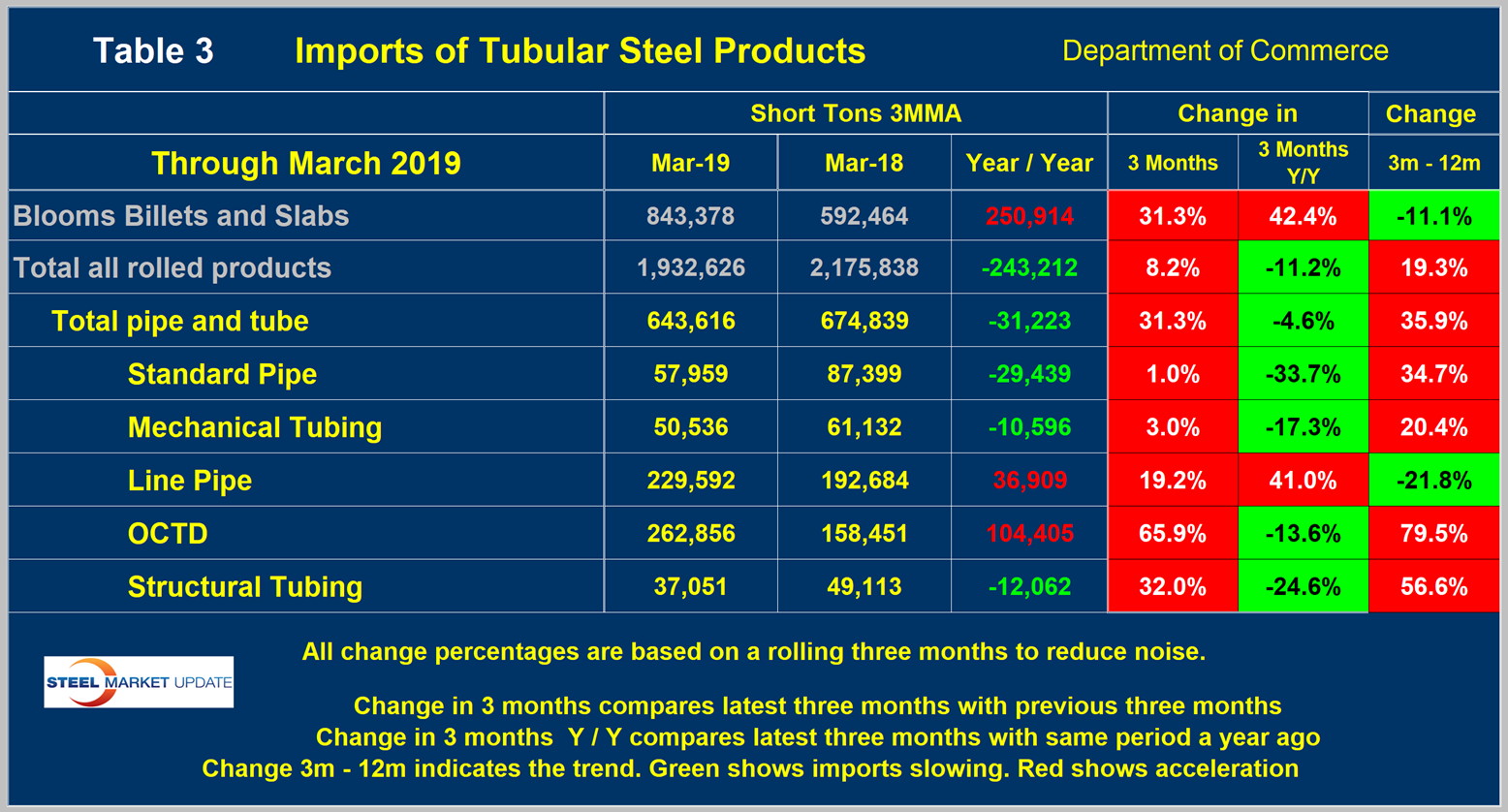
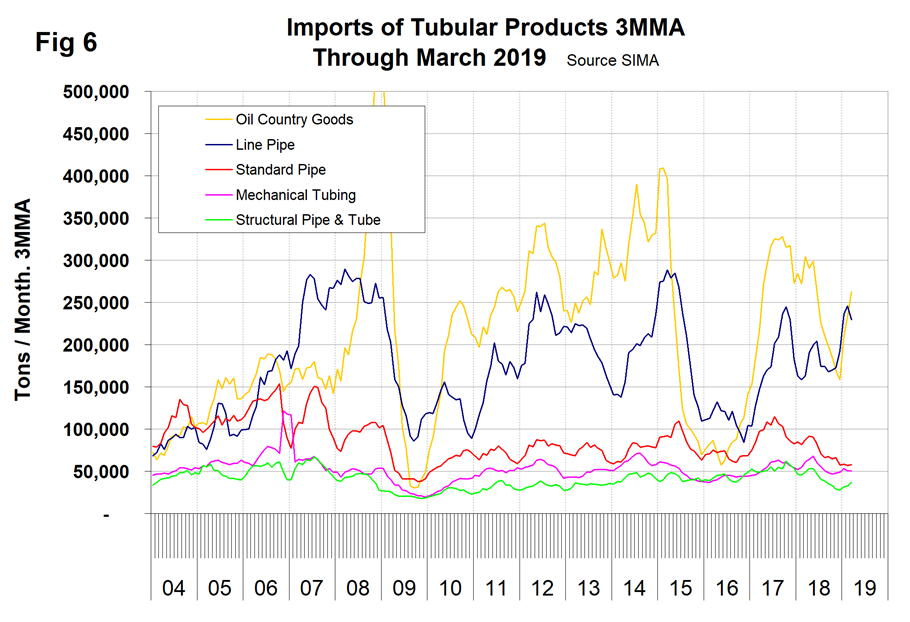
Explanation: SMU publishes several import reports ranging from this very early look using license data to the very detailed analysis of final volumes by product, by district of entry and by source nation, which is available in the premium member section of our website. The early look is based on three-month moving averages using the latest license data, either the preliminary or final data for the previous month and final data for earlier months. We recognize that the license data is subject to revisions but believe that by combining it with earlier months in this way gives a reasonably accurate assessment of volume trends by product as early as possible. The main issue with the license data is that the month in which the tonnage arrives is not always the same month in which the license was recorded. In 2014, we conducted a 12-month analysis to evaluate the accuracy of the license data compared to final receipts. This analysis showed that the licensed tonnage of all carbon and low alloy products was 2.3 percent less than actual receipts, close enough to confidently include license data in this current update. The discrepancy declined continuously during the 12-month evaluation as a longer period was considered.
Statement from the Department of Commerce: The Steel Import Monitoring and Analysis (SIMA) system of the Department of Commerce collects and publishes data of steel mill product imports. By design, this information gives stakeholders valuable information on steel trade with the United States. This is achieved through two tools: the steel licensing program and the steel import monitor. All steel mill imports into the United States require a license issued by the SIMA office. The SIMA Licensing System is an online system for importers to register, apply for and receive licenses in a timely manner. In addition to managing the licensing system, SIMA publishes near-real-time aggregate data on steel mill imports into the United States. These data incorporate information collected from steel license applications and publicly released Census data. The data are displayed in tables and graphs for users to analyze. Additionally, SIMA provides data on U.S. steel mill exports, as well as imports and exports of select downstream steel products.

Peter Wright
Read more from Peter WrightLatest in Steel Products Prices North America

Nucor slows HRC price climb with $5/ton increase
After eight weeks of double-digit price increases on hot-rolled (HR) coil, Nucor slowed the price rise this week with an increase of $5 per short ton.

Domestic CRC prices surge ahead of imports
The price spread between stateside-produced CR and imports reached its widest margin in over a year.

Evraz raises plate prices $160/ton
Evraz North America (NA) has followed Nucor and SSAB with a plate price increase of its own: up $160 per short ton (st). The increase was effective immediately for all new orders of carbon, high-strength low-alloy, and normalized and quenched-and-tempered plate products, as well as for hot-rolled coil, the steelmaker said in a letter to […]

Nucor lifts HR coil to $820/ton
Nucor has increased its consumer spot price (CSP) for hot-rolled (HR) coil for a fourth consecutive week.

Nucor pushes HR spot price to $790/ton
Nucor increased its consumer spot price (CSP) for hot-rolled (HR) coil to $790 per short ton (st) on Monday, Feb. 10 – a $15/st bump vs. last week. The Charlotte, N.C.-based company has raised its weekly CSP by $40/st over the past three weeks after maintaining tags at $750/st since Nov. 12, according to SMU’s […]
